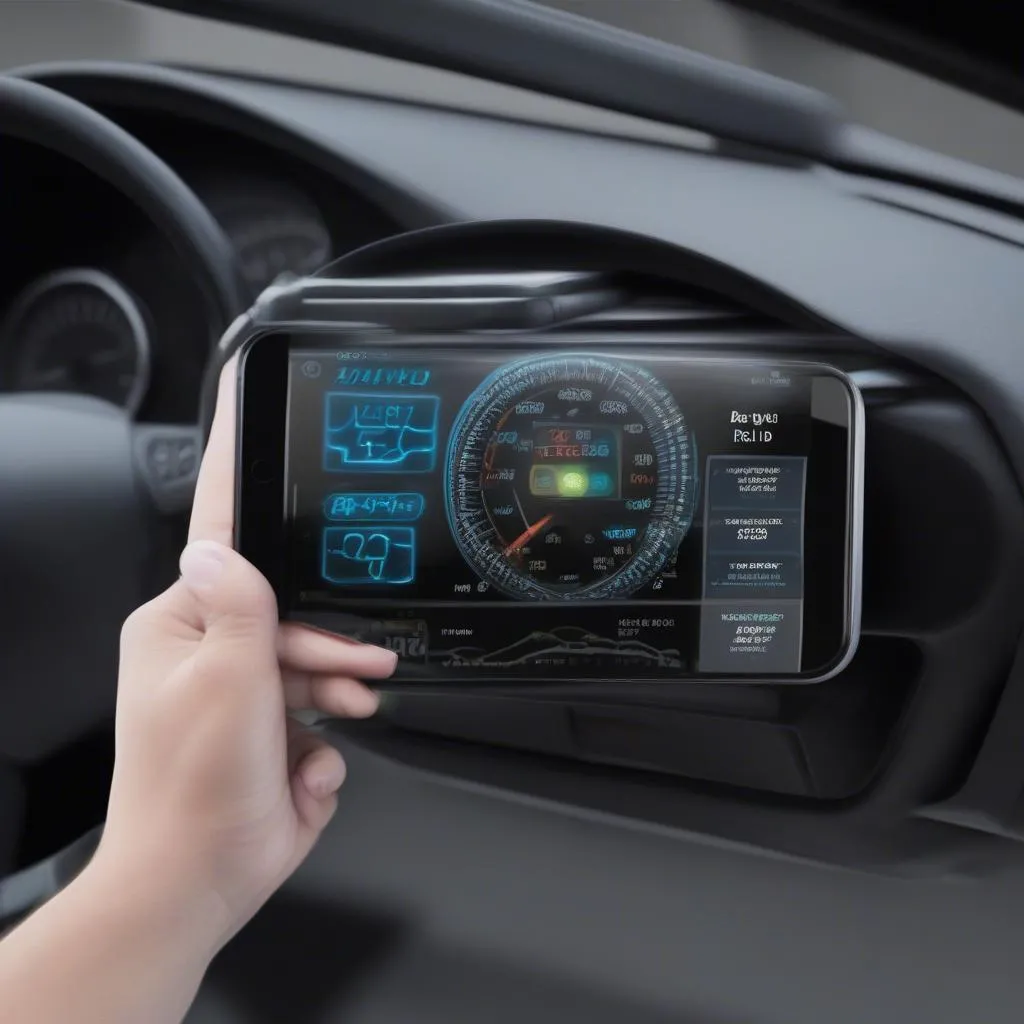Have you ever wondered how your car’s engine, transmission, or other critical systems are performing? You’re not alone! Many car owners are curious about the inner workings of their vehicles, and that’s where OBD-II PIDs come in. Think of OBD-II PIDs as a secret language that your car speaks, providing valuable insights into its health and performance.
What are OBD-II PIDs?
OBD-II, short for On-Board Diagnostics II, is a standardized system implemented in most vehicles manufactured after 1996. It’s like a built-in diagnostic tool that allows you to access various data streams from your car’s computer. PIDs, or Parameter IDs, are specific data points that represent different parameters and functions within your car’s system.
Understanding the Importance of PIDs
From a mechanic’s perspective, OBD-II PIDs are essential for diagnosing and troubleshooting issues. They can provide real-time data about engine speed, fuel pressure, oxygen sensor readings, and much more. However, OBD-II PIDs are also valuable for car owners who want to understand their vehicle better and potentially improve its performance.
Accessing and Interpreting PIDs
You can access and interpret PIDs using a diagnostic scanner. Many affordable OBD-II scanners are available on the market, including the popular “Dealer Scanner” for European cars. These scanners connect to your car’s OBD-II port, typically found under the dashboard.
Diving Deeper into PIDs for European Cars
European cars often have unique PIDs that are not readily available on generic OBD-II scanners. This is where specialized software like “Dealer Scanner” comes in handy. This software is specifically designed for European car brands and provides access to a wider range of PIDs, allowing you to gain a more comprehensive understanding of your car’s performance.
Finding the Right OBD-II Scanner for Your European Car
When choosing an OBD-II scanner, it’s crucial to ensure compatibility with your car’s make and model. Some popular scanner options include:
- OBD Eleven: A powerful and versatile scanner compatible with various European car brands.
- Carista: A Bluetooth-enabled scanner that allows you to connect to your phone for diagnostics and coding.
- OBDLink MX+: A highly-rated scanner known for its accuracy and extensive PID support.
Real-World Application of OBD-II PIDs
Let’s imagine you’re driving your BMW 3 Series on a long trip across California. You notice your engine light comes on, and your fuel efficiency seems to have dropped. This is a classic example where OBD-II PIDs can be invaluable.
Connecting your OBD Eleven to your car’s OBD-II port and utilizing Dealer Scanner, you can access specific PIDs related to fuel consumption and engine performance. You might find that your oxygen sensor is malfunctioning, leading to the engine light and reduced fuel efficiency. Armed with this knowledge, you can take immediate action and potentially avoid further damage to your car.
This image demonstrates how an OBD-II scanner connects to a car’s OBD-II port to access PIDs.  OBD-II Scanner Connected to Car's Port
OBD-II Scanner Connected to Car's Port
Common OBD-II PID Applications
Here are some common ways OBD-II PIDs can be utilized:
- Diagnosing Engine Problems: Identify engine misfires, fuel system issues, and emissions problems.
- Monitoring Fuel Economy: Track fuel consumption and identify potential areas for improvement.
- Analyzing Vehicle Performance: Monitor acceleration, braking, and transmission performance.
- Clearing Check Engine Lights: Clear codes and reset the engine light after repairs.
Exploring Further: Frequently Asked Questions about OBD-II PIDs
Q: What are some commonly used OBD-II PIDs?
A: Some commonly used PIDs include:
- Engine RPM (Revolutions Per Minute)
- Vehicle Speed
- Engine Load
- Throttle Position
- Fuel Pressure
- Oxygen Sensor Readings
Q: Are OBD-II PIDs compatible with all car brands?
A: Yes, OBD-II is a standardized system, but some car brands may have unique PIDs not accessible on generic scanners.
Q: Can I modify PIDs to improve my car’s performance?
A: Modifying PIDs can be risky and may void your car’s warranty. Consult with a qualified mechanic before making any changes.
Q: Where can I find a list of OBD-II PIDs for my specific car model?
A: Several online resources offer comprehensive lists of OBD-II PIDs, including the website mentioned in the keyword, Ht Tps En.wikipedia.org Wiki Obd-ii_pids.
Q: Can I use OBD-II PIDs to diagnose my car’s electrical system?
A: While OBD-II PIDs provide some insight into electrical systems, they may not cover all aspects. Specialized diagnostic tools are often needed for in-depth electrical system diagnostics.
Conclusion:
Understanding OBD-II PIDs can empower you to become a more informed car owner. By using a suitable diagnostic scanner and software like “Dealer Scanner,” you can gain valuable insights into your car’s performance and potentially save yourself from costly repairs. Remember to consult with a qualified mechanic for any complex diagnostic tasks or repairs.
This image shows a screenshot of a popular OBD-II scanner app displaying various PIDs and data readings.  OBD-II Scanner App Interface
OBD-II Scanner App Interface
For more information or assistance with OBD-II diagnostics, contact us at Whatsapp: +84767531508.